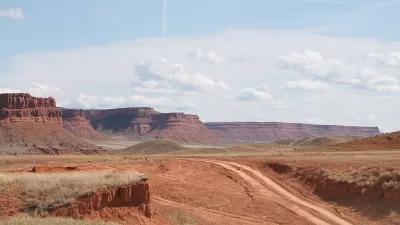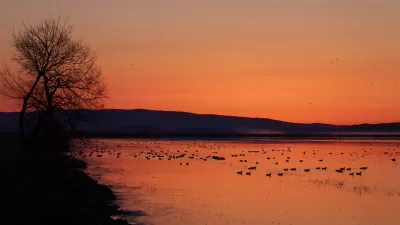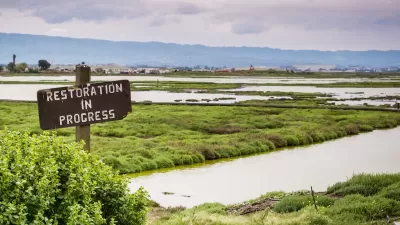The president's ambitious commitment to protect 30% of U.S. land and water by 2030 might be too broad in attempting to satisfy all land users.

In the days after his inauguration, President Biden made a "commitment to protecting 30% of U.S. land and water — over 720 million acres — by 2030." But, as Wufei Yu reports in High Country News, a preliminary report by the Department of Interior has made "Western and Indigenous climate activists and conservationists fear that it promises too much and could hamper conservation by trying too hard to please all the various land users."
Yu writes:
In order to tackle three challenges — the disappearance of nature, climate change and inequitable access to the outdoors — the report laid out a locally led, science-based and collaborative road map toward achieving “30 by 30.” As part of it, the Biden administration invited farmers, ranchers and fishermen to get involved, promising to maintain ranching in the West “as an important and proud way of life.” The report also acknowledged the conservation movement’s discriminatory past, including its appropriation of Native American ancestral land and neglect of communities of color, and it vowed to work toward a more inclusive future.
"Many conservationists pointed out, however, that, according to the America the Beautiful report, farming, grazing and logging could count as conservation under the 30% designation if the land is managed with “the long-term health and sustainability of natural systems” in mind." These solutions, some argue, "only kick the can of problems down the road." States, Yu writes, have to take action too. "Historically, most conservation projects happen on the region’s public lands. So far, two states have hopped on board. Nevada became the first to pass legislation adopting the conservation goal, while California Gov. Gavin Newsom signed an executive order that will establish listening sessions with tribal members and private landowners regarding the project."
FULL STORY: A reality check on Biden’s ‘30 by 30’ conservation plan

Alabama: Trump Terminates Settlements for Black Communities Harmed By Raw Sewage
Trump deemed the landmark civil rights agreement “illegal DEI and environmental justice policy.”

Study: Maui’s Plan to Convert Vacation Rentals to Long-Term Housing Could Cause Nearly $1 Billion Economic Loss
The plan would reduce visitor accommodation by 25% resulting in 1,900 jobs lost.

Why Should We Subsidize Public Transportation?
Many public transit agencies face financial stress due to rising costs, declining fare revenue, and declining subsidies. Transit advocates must provide a strong business case for increasing public transit funding.

Paris Bike Boom Leads to Steep Drop in Air Pollution
The French city’s air quality has improved dramatically in the past 20 years, coinciding with a growth in cycling.

Why Housing Costs More to Build in California Than in Texas
Hard costs like labor and materials combined with ‘soft’ costs such as permitting make building in the San Francisco Bay Area almost three times as costly as in Texas cities.

San Diego County Sees a Rise in Urban Coyotes
San Diego County experiences a rise in urban coyotes, as sightings become prevalent throughout its urban neighbourhoods and surrounding areas.
Urban Design for Planners 1: Software Tools
This six-course series explores essential urban design concepts using open source software and equips planners with the tools they need to participate fully in the urban design process.
Planning for Universal Design
Learn the tools for implementing Universal Design in planning regulations.
Smith Gee Studio
Alamo Area Metropolitan Planning Organization
City of Santa Clarita
Institute for Housing and Urban Development Studies (IHS)
City of Grandview
Harvard GSD Executive Education
Toledo-Lucas County Plan Commissions
Salt Lake City
NYU Wagner Graduate School of Public Service





























